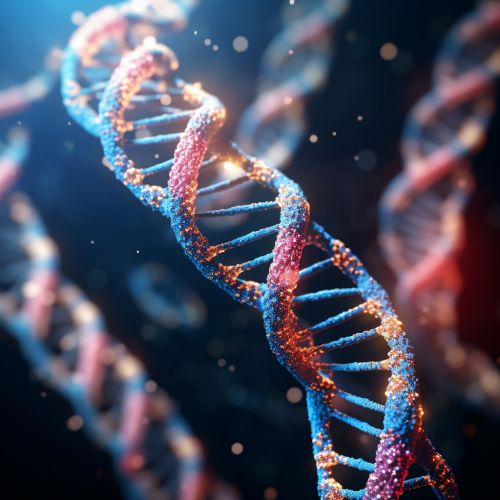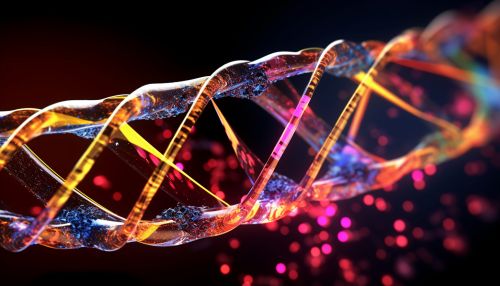Transcription factor
Introduction
A transcription factor (TF) is a protein that controls the rate of transcription of genetic information from DNA to RNA, by binding to a specific DNA sequence. The function of TFs is to regulate—turn on and off—genes in order to ensure that they are expressed in the right cell at the right time and in the right amount throughout the life of the cell and the organism.


Types of Transcription Factors
There are approximately 1600 different types of TFs in a human cell. Transcription factors can be classified in different ways, including by their structure and by the DNA sequence they bind to.
By Structure
Transcription factors can be grouped based on the structure of their DNA-binding domains. Here are a few examples:
- Zinc finger proteins: These are among the most common TFs in the human body. The zinc finger domain is a type of protein motif where the protein folds into a loop or 'finger' shape, stabilized by a zinc ion.
- Helix-turn-helix motifs: These are commonly found in proteins that bind to DNA. One helix, known as the recognition helix, fits into the major groove of the DNA.
- Leucine zippers: These are common in eukaryotic cells and some viruses. They are characterized by a dimerization domain of leucines.
By DNA Sequence
Transcription factors can also be grouped by the specific DNA sequences they bind to. Some examples include:
- Specificity protein 1 (Sp1): This binds to GC-rich sequences.
- CCAAT-enhancer-binding proteins (C/EBPs): These bind to the CCAAT box, a distinct pattern of nucleotides with 'GGCCAATCT' consensus sequence.
- TATA binding protein (TBP): This binds to the TATA box, which is a type of promoter sequence.
Mechanism of Action
Transcription factors work by binding to the enhancer or promoter regions of DNA adjacent to the genes that they regulate. When a transcription factor binds to its consensus sequence, it can promote or block the recruitment of RNA polymerase to the gene, thereby altering the rate of transcription.
Promoting Transcription
When promoting transcription, TFs often need to recruit other proteins such as coactivators and the general transcription machinery to produce a transcription initiation complex. For instance, the TATA binding protein (TBP) binds to the TATA box in the core promoter of the gene, and it helps to recruit TFIIB and the rest of the general transcription factors.
Blocking Transcription
Transcription factors can also block transcription by recruiting corepressors, which can block the binding of RNA polymerase to the gene. Alternatively, TFs can bind to silencer regions of the DNA to downregulate gene expression.
Regulation of Transcription Factors
The activity of transcription factors can be regulated by various mechanisms. Some transcription factors are activated by phosphorylation, while others are inhibited. Some transcription factors are located in the cytoplasm and are translocated to the nucleus upon activation. Others are already in the nucleus, and are activated by the degradation of an inhibitor.
Clinical Significance
Transcription factors play a crucial role in many biological processes and are implicated in a variety of diseases. Mutations in transcription factors can lead to diseases like cancer, diabetes, and many others. For instance, the transcription factor P53, which regulates cell cycle progression, is mutated in a wide variety of cancers.
